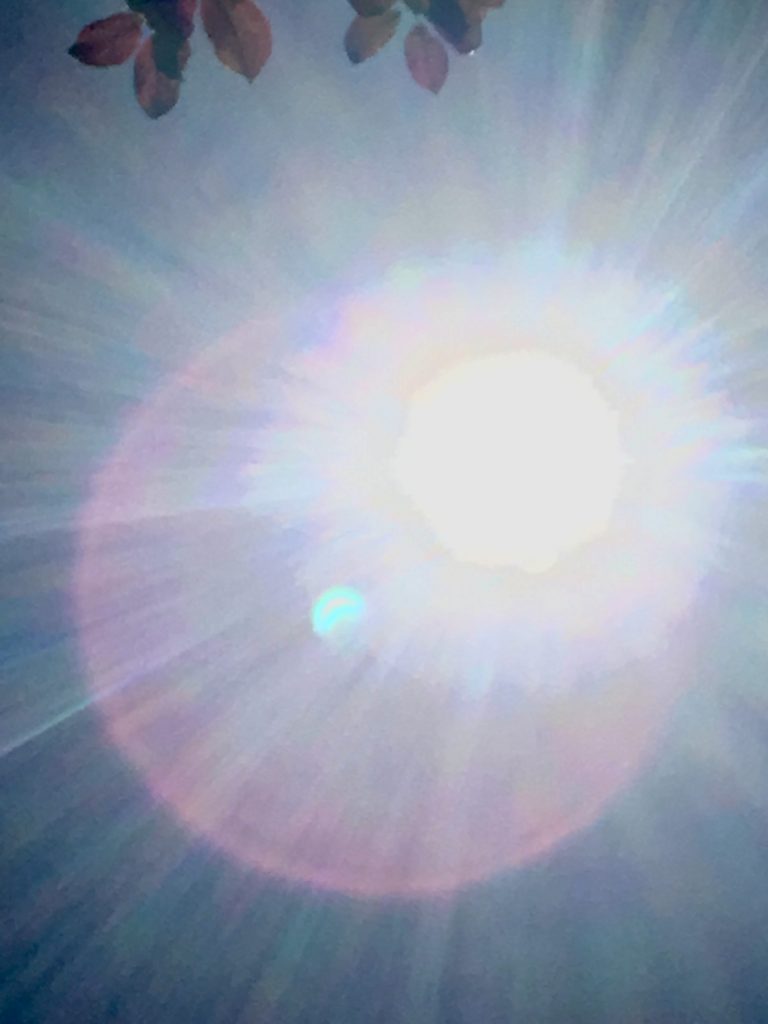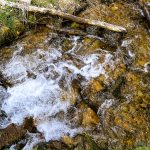 Trees don’t grow from the ground—they grow from the air.
Trees don’t grow from the ground—they grow from the air.
Here’s how: leaves pull in carbon dioxide, and sunlight breaks the molecule apart, sending the oxygen back into the sky while keeping the carbon.
Step by step, the tree stitches that carbon into sugars, then into cellulose and wood. It’s a slow, steady assembly line powered entirely by light—sunlight turning into substance.
And it raises a curious question: which came first—the carbon dioxide or the leaf? The leaf can’t exist without carbon, yet the carbon doesn’t become anything without the leaf. Life seems to answer by moving in circles, not lines—a continual exchange, each step borrowing from the one before.
Someone recently gifted me this perspective. I was struck—no, dumbstruck—with one more example of Nature’s full-circle nature. Pun intended.
Having sat before countless campfires, it’s easy to imagine watching a single flame slip from beneath a log and climb the bark of a pine log in a thin, orange ribbon. I sense the warmth brushing my face before I even realize the fire has jumped. The light moves toward me faster than my own thoughts. Even in my memory, for a moment, it feels like the forest is opening its hand.
When we strike a match, the tree’s long memory returns to the sky. Heat gives carbon and oxygen permission to reunite, and in an instant, bonds break and reform—a rush of collisions as stored sunlight is released again. Every snap and flicker is a reunion of atoms once separated by the patient work of photosynthesis. The warmth on our skin isn’t from the wood itself but from the light the tree captured years ago, now pouring out all at once.
A campfire, then, is not destruction. It’s a reversal. Sunlight that once streamed through green leaves streams again as flame. The circle closes. The forest inhales; the fire exhales.
Sit long enough beside a fire and the familiar becomes astonishing. Each flame reveals the radiance stored within matter—the quiet energy threaded through every living thing. Scientists call it oxidation, but the process hums with something older than chemistry—a reminder that energy is never lost, only transformed. What the tree borrowed from the sun, it now gives back freely.
We, too, carry a kind of stored light. The calm we offer to a friend, the steadiness we bring to a tense moment, the warmth that moves through us when we speak honestly or forgive generously—these are forms of energy gathered from somewhere brighter. They wait within us until contact, when a spark of kindness releases them again into the world. Like the tree, we take in light and give it back in another form.
When the last ember fades to ash, it’s tempting to think the moment is gone. But nothing has disappeared. The carbon lifts upward, the warmth disperses, the light returns to the sky. In this small, glowing exchange, the ordinary becomes sacrament: sunlight made solid, then set free.
A fire reminds us that creation is a circle, not a line/
Light to leaf.
Leaf to wood.
Wood to flame
Flame to light again.
And if we’re paying attention, it suggests one more thing: the light we carry will someday find its way home, too.





